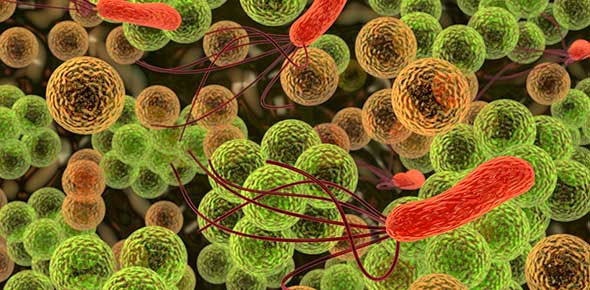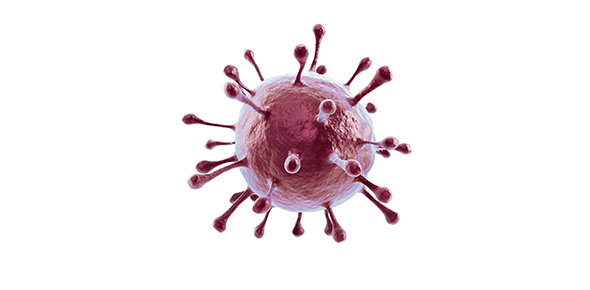Related Flashcards
Related Topics
Cards In This Set
| Front | Back |
|
Nonsporulating Firmicutes
|
-low GC (30-50%)
-gram pos -resistant to reduced water potential = halotolerant -many species are pigmented |
|
Staphylococcus
|
-example of nonsporulating firmicute
-opportunistic pathogen -facultattive |
|
Sarcina
|
-example of nonsporulating firmicute
-obligate anaaerob -extremely acid tolerant -can inhabit and grow in stomachs of monogastric animals |
|
Nonsporulating Firmicutes: Lactic Acid Bacteria
|
-gram pos
-most aerotolerant anaerobes, catalase neg -fastidious (complex nutrient requirements) -no cytochromoes = no ETC = obligate fermeneters (homolactic or heterolactic) |
|
Examples of Homofermentative bacteria
|
1. Streptococcus - production of buttermilk and silage, some are pathogenic
2. Lactococccus - dairy, fastidious 3. Enterococcus - fecal origin |
|
Examples of Heterofermentative bacteria
|
1. Leuconostoc - saurkraut, production of dextran = slimy
2. Lactobacillus - common in dairy products, can be homo or hetero, resistant to acidic conditions |
|
Nonsporulating Firmicutes: Listeria
|
-related to LActobaccillus
-gram pos coccobacilli -form chains 3-5 cells long -require full oxic or microoxic conditions for growth -catalase pos |
|
Endospore-forming Firmicutes
|
-distinguished on the basis of cell morphology, and the shape and cellular postion of endospore, metabolism, and O2 requirement
-generally found in soils -endospores are advantages for soil microorganisms |
|
Bacillus
|
-example of Endospore-forming Firmicute
-many produce extracelluar hydrolytic enzymes that break down polymers -many produce antibiotics -Bacillus thuringiensis produce insect larvicides in the parasporal body |
|
Clostiridium
|
-example of Endospore-forming Firmicute
-lack a respiratory chain, anaerobic -some perform Stickland reactions (ferment amino acids) -mainly found in anaerobic pockets in the soil -also live in mammalian intestinal tract -some are pathogenic; others cause diseases such as botulism, tetanus, and gangrene |
|
Sporosarcina
|
-example of Endospore-forming Firmicute
-only spore forming coccus -common in soils -S. urea is very alkaline tolerant, cleaves urea to CO2 and NH3 (urease) |
|
Heliobacteria
|
-example of Endospore-forming Firmicute
-anoxygenic phototrophs that produce unique bacteriochlorophyll g -reside in soils and also in highly alkaline environments (eg soda lakes and alkaline soils) -can fix nitrogen |
|
Mollicutes: The Mycoplasmas
|
-some of the smallest organisms capable of autonomous growth
-parasites that inhabit animal and plant hosts -they lack cell walls, key components of peptidogylcan are missing -pleomorphic -medium is typically very complex -characteristic "fried egg" appearence |
|
Spiroplasma
|
-example of Mollicute: Mycoplasmas
-helical or spiral-shaped wall-less cells -rotary screw motility -isolated from ticks, hemolymph and gut of insects, vascular plant fluids, and insects that feed on the fluids |
|
Actinobacteria
|
-high GC, gram pos.
-mostly harmless commensals -valueablefor antibiotics and certain fermented dairy products -increasing trend toward branching cell structure: 1. Arthrobacter + Coryneform + Propionibacterium 2.Mycobacteria 3. Actinomycetes |






